House numbers in Milan and many other cities are usually standard and boring, like this:Â ![]() . But sometimes you find interesting and unusual ones, so I’ve decided to collect them.
. But sometimes you find interesting and unusual ones, so I’ve decided to collect them.





| January | 1 – New Year’s Day6 – Epiphany | Smog Days | |
| February |  |
14 – San Valentino | |
| March |  |
8 – Festa della Donna(Women’s Day)Carnevale | Italian Winter Weather |
| April | Pasqua (Easter) | Holiday Treats | |
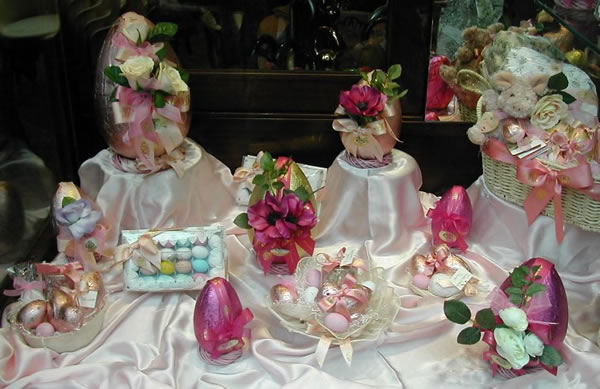 |
|||
| May |  |
1 – Labor Day | Cambio di Stagione |
| June | 2 – Republic Day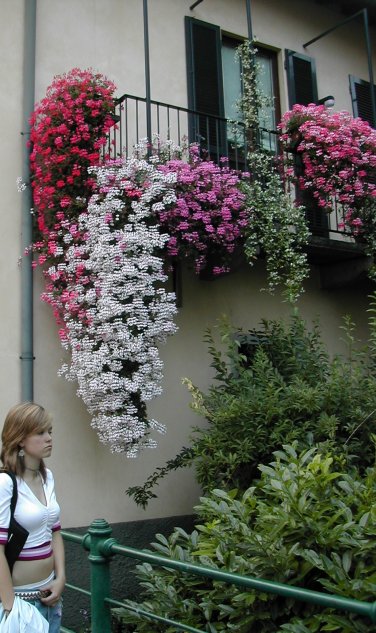 |
||
July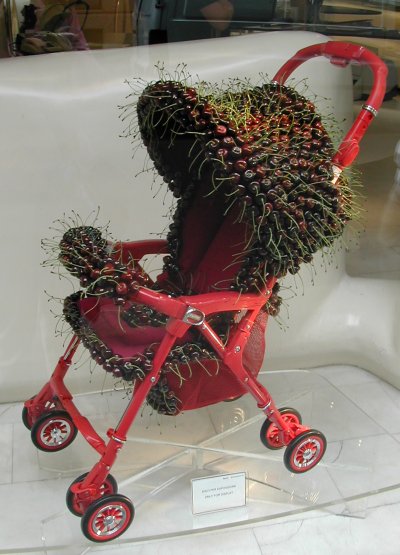 |
Air-ConditionedCommuting with NatureSummer Fun | ||
| August | 15 – FerragostoSummer Holidays | Feeling the SeasonsSummer Lovin’ | |
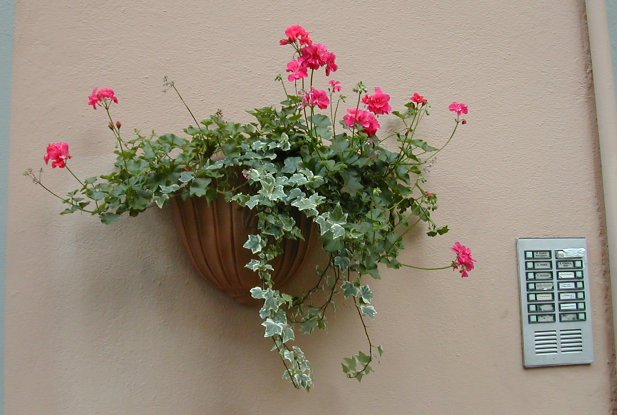 |
|||
| September | |||
| October | |||
November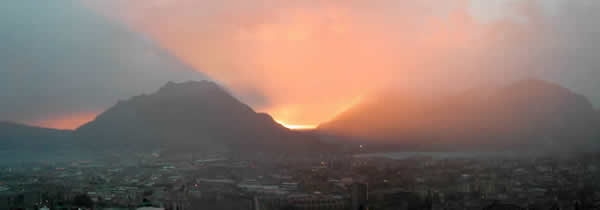 |
|||
December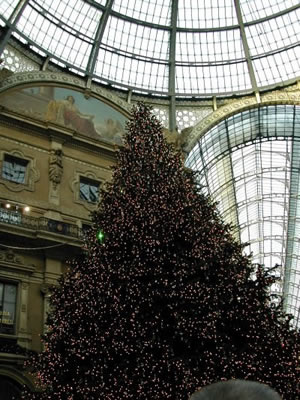 |
6 – San Nicolo’ (patron of Lecco)7 – Sant’ Ambrogio (patron of Milan)8 – Immaculate Conception
25 – Christmas 26 – Santo Stefano 31 – Capo d’Anno |
Winter HolidaysBridging the HolidaysHoliday Hell | |
unconscious (?) irony: a shop in downtown Milan displays this antelope head next to a photo of Brigitte Bardot, who, retired from acting, is a big animal rights activist
Since I moved (back) to the US earlier this year, a number of people have asked me what I miss about living in Italy. It’s a hard question, and part of my agenda for this trip was to try to answer it. Yesterday provided me with a mini case study on the matter.
Although you can find individual items discounted year-round, Italian retailers are allowed, by law, only two big sales periods during the year, in early January and early July. The exact dates are determined by local government, and this year the Milan sales began January 3rd. After a fairly disastrous Christmas season, and in a very gloomy economy, both shop owners and customers were looking forward to this.
I wasn’t – I hate crowds and am not a big fan of shopping, so this was a nightmare scenario for me. But my business wardrobe needs updating and I wouldn’t have any other time before I leave for Dublin Monday. So I headed off to Milan, where at least I could look forward to also seeing friends.
Enrico drove me to the Lecco train station, arriving with five minutes to spare for the train I wanted to catch. Usually five minutes is plenty of time to buy a ticket, stamp it in the “obliterator”, and get on the train. But only two of the three ticket windows were open – apparently this period up to the Epiphany (Jan 6th) is a semi-holiday for the railways, so they were short-staffed. Both open windows had longish lines which would take longer because people wanted to discuss their travel plans in detail.
Usually you can buy “kilometric” (25 km, 30 km, etc.) tickets from the newsstand in the station, but they were out of the 50 km ones I needed for Milan. I poked my nose into the line at a ticket window to ask if it would be possible to buy a ticket on the train.
“Sure you can,” said the railway employee sarcastically, “if you also want to pay a 50 euro fine.”
I had to run to another newsstand down on the corner to get the !$!#@$@# ticket – all of 3.60 euros’ worth. Then run back, stamp it, and get on the train, which left the platform two minutes later. And no one ever came to check that I even had a ticket.
The train was middling clean and decent. Toilet paper in the bathroom, but no water to flush or wash my hands. Graffiti on the seats and walls. The real problem, however, was the heating. It was on, but not strong enough to cope with a very cold day. I was wearing a heavy sweater and sat with my coat over my knees, but still felt cold throughout the hour-long trip.
I arrived at Porta Garibaldi, one of Milan’s train stations, and had to take the metro to get to my friend’s place for lunch. I’d need to switch from the green line to the red, which I should logically do at Piazzale Loreto. As I was waiting on the platform, I heard a garbled announcement (in Italian only) about trains not stopping at two different stations, including Loreto, due to “works.” I couldn’t understand enough to know whether this would affect me, but thought: “This must be a pre-announcement referring to some other day. They surely wouldn’t be blocking stations today, of all days?”
They would. The train sailed through Loreto station without stopping. There were men laying tile on the platform on that side. Passengers who needed to get to Loreto had to go to the next stop and catch a train back in the other direction (the platform on the other side was open). This on one of the busiest shopping days of the year, at one of the prime stops for Corso Buenos Aires, a favorite shopping area. For work that could have been done in the middle of the night when the Milan metro is closed anyway. Probably there are rules preventing the tile guys from working after hours. Score: union rules – ten; customer service – zero.
I reached my friend’s home and had a lovely lunch with him and others. Then I finally, reluctantly, tackled my shopping. I was supposed to meet Ross downtown, which required taking the (now even more crowded) metro. Corso Vittorio Emmanuele, a large pedestrian thoroughfare in the heart of Milan, was wall-to-wall people, many of them with lit cigarettes wafting smoke into my face. I saw two well-dressed young men who had stopped in the middle of the street to enjoy a snack of freshly-roasted chestnuts, and were casually dropping the shells on the ground.
Ross and I shopped for about two hours, an activity I find exhausting under the best of circumstances. And there is nowhere to sit in Italian stores. Italian retailers don’t seem to have grasped the idea that a tired shopper, given a chance to take a load off her feet for a few minutes, might feel refreshed enough to hang around and spend more money.
As the shops began to close, we made our way to the home of another set of friends for dinner. Enrico had come from Lecco with the car, so at least we didn’t have to wait in a cold station for a train to get back.
The summary of the day is that I was glad to see friends and spend time with my family, but the rest was non-stop hassle. Which pretty much sums up my feelings about Italy at the moment: there are people here I’m glad to see (which, for me, is true of many other places). Other than that, there’s not much I miss about living in Italy.
Although it’s hot here in the summer, Italy’s not big on air conditioning, preferring to rely on older methods for keeping cool.
Most Italian buildings are naturally insulated, being made of concrete, brick, or stone. The older they are, the thicker the walls, which of course adds to the insulation. Windows are protected by shutters, whose style varies with location and age of the building. These insulate against the weather, but also protect against thieves (housebreaking is far more common here than street mugging).
Our apartment in Milan had tapparelle: slatted, roll-down shutters operated by a pulley system with a cloth strap that you pulled, hand over hand, to raise or lower them. This was barely within the limits of my strength on our large bedroom window, even though the shutters were made of plastic – we were on the 7th floor, so security wasn’t much of an issue.
My in-laws’ apartment in Rome, being on the first floor, had to have strongtapparelle. The originals were elegant wood, but, when they began to break down with age, this proved very expensive to replace, so the new ones were steel painted a woodish sort of color. Those were even heavier than the wood, so we were thankful for the electric motor that raised and lowered the 3-meter-widetapparella in the living room – until the electricity went out…
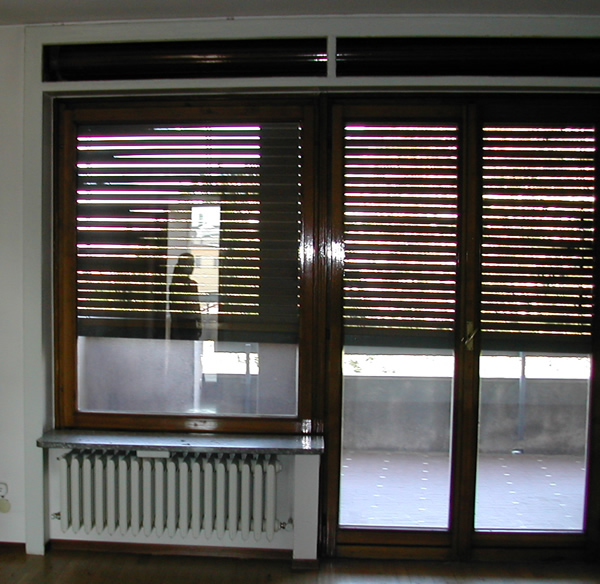
^ Wooden tapparella on our first apartment in Lecco – operated by a hand crank (not visible in this picture), it took forever to open or close. Then the slats started breaking…
The problem with tapparelle as a safety feature is that, to be safe, you have to close them at night – clever Italian house thieves have been known to use sleeping gas on homeowners to ensure easy pickings inside the house. So the shutters in Rome had to be closed, no matter how hot the night. The most you could do was leave them slightly open so that a centimeter or two of air could pass underneath and through the slim cracks between the slats.
Back in Milan, surrounded by other 7th and 8th-floor apartments, we closed thetapparelle for privacy, except on a few summer nights when we were too hot to care if the neighbors saw us naked in the moonlight (it was too hot to wear clothes or have sheets over us on the bed, either). We found a partial solution in putting a new type of frame on the bedroom tapparella, which could be tilted out on a hinge even when the shutter was fully rolled down, so we could get air in under it, and look down into the street, but no one could look across or down into us.
Here in Lecco, most houses have persiane – hinged shutters with fixed, louvered slats pointing downward, so no one can see in, but you still get some light and air. We don’t feel the need to close these most of the time, even though we don’t have curtains: the position of our house is such that no one can look into our windows, unless they use binoculars. But the persiane are useful to keep the sun out while letting air in. On summer afternoons I close everything up on the sunny side of the house – shutters and windows – and the rooms stay relatively cool til the evening breezes come and it’s time to open it all up again.
Note: Yes, we also use fans.
On March 31st, 2008, my residence in Italy was officially revoked. This was easy to accomplish. A few days before, Enrico and I had gone together to Lecco’s Ufficio dell’Anagrafe (I guess a reasonable translation would be “Population Records Office”). This is where you go to record transfers of residence (within Italy), births, deaths, and marriages.
To undo my Italian residency, all that was required was to write a letter which the nice lady at the window dictated and Enrico transcribed (his handwriting being much more legible than mine). She photocopied my carta d’identita’ (Italian identity card) and gave it back to me, then told us to go to the Registry Office (within the same building) to officially hand in the letter. The lady there gave us a dated and signed photocopy, and that was all there was to it.
You may be wondering: why did I so easily give up what so many foreigners would give their eyeteeth to have? Taxes, my friend. Most countries in the world, including Italy, make all their residents, citizens or foreigners, pay some sort of income tax. The US is perhaps the ONLY country in the world which requires its non-resident citizens to pay tax. So, if you’re an American living overseas, you’ve got two sets of taxes to file per year. There is a tax treaty between the US and Italy such that the US gives you tax credits for the Italian taxes paid on the first $86,000 of your income. Beyond that, you’re paying both governments for the privilege of working. There was a time, in my Dotcom boom heyday, when I was paying over 50% of my income in taxes.
Since I will no longer be availing myself of Italian national services such as health care and education, I see no good reason to keep giving money to the Italian government, especially when I have to put a kid through college in the US. So I’ve cancelled my Italian residency. I can still visit at least as often I’m likely to have time to, I think the limit is three months out of every six. Supposedly at some point someone official will show up at our house to ascertain whether I’m still there or not.